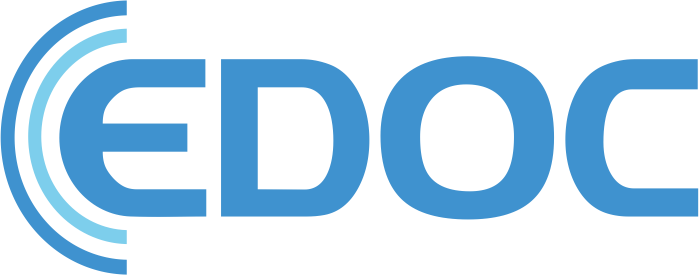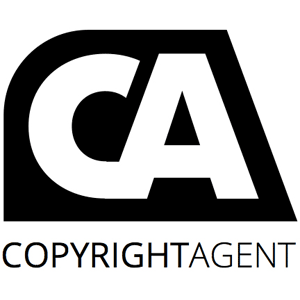KnockoutJS
Knockout is a lightweight front-end JavaScript library. It provides all the necessary components and tools to create highly functional and responsive user interfaces for web applications, including powerful single page applications and progressive web apps. It especially excels in allowing for the development of applications with feature-rich display and editor user interfaces (UI).
Knockout creates interfaces using the Model-View-ViewModel (MVVM) pattern, a software architectural model that separates the parts of a UI so they can be worked upon separately. Model refers to the data model, which is simply all the data, or content, associated with the interface. View, meanwhile, refers to what the users sees – the content when it's presented on the screen. Then, lastly, we have the View Model, which is responsible for connecting the Model and View, sitting between the two layers. The View Model is an object-oriented (OO) representation of the interface, taking the various data entered by a user in the interface and creating JavaScript objects for it. After taking the input data from the View, it then holds it while the user is working on it. When the user is finished, the View Model then takes the data and saves it to the Model. When it’s the other way around and there’s a request made to the Model, the retrieved data is then passed to the View Model, which maps the data to objects and displays them using the View.
WHY CHOOSE KNOCKOUT?
-
MVVM PATTERN ARCHITECTURE
As detailed above, the MVVM pattern is a highly effective way of making the design and development of user interfaces simpler. With a separation of layers, each part can be developed individually, making them easier to maintain and further develop when the need arises. It also encourages better code organization, which also saves time and makes updates easier to implement.
-
TWO-WAY DATA BINDING
Knockout’s binding mechanism is called Declarative Binding and allows you to connect parts of the UI to the data model, making it easy to display it in the view. The View Model then takes the retrieved data, maps it to objects, and then uses declarative binding within an HTML document before passing it to the view to display.
-
OBSERVABLES
This is taken a step further with Observables, which allow you to instruct the application to ‘watch’ certain variables for changes. This results in the UI automatically being updated as soon as something in the View Model changes, which creates more dynamic, responsive applications.
-
DEPENDENCY TRACKING
Observables are also useful for letting other parts of the code, called subscribers, know when a particular variable has changed. This ties into Dependency Tracking, Knockout’s mechanism for determining which variables are connected to each other. This is useful when the data is acted on within a function to create additional data to be returned to a user: The subtotal of multiple items in a shopping basket, for example, which requires the addition of two or more variables to be calculated.
One of the main advantages of Dependency Tracking is its ability to evaluate whether a calculation or function needs to be run again or not, based on changes to the data model. If changes are made, then the function will run and the calculation made but if it doesn’t change, no additional calculations will take place. This leads to greater efficiency and speed, with the application not having to carry out needless computations.
-
POWERFUL TEMPLATE ENGINE
Another benefit offered by Knockout is its powerful template engine which allows you to create reusable layouts for your user interfaces. It allows you to bind objects from your data model within HTML for output to the view layer. Firstly, this allows you to easily present a uniform look and feel across your entire application, as well as eliminating the repetition of creating individual pages. This results in a more polished and professional looking application, only done in less time and with less effort.
However, the power of Knockout’s template engine is offset by the fact that it’s severely TypeScript-unfriendly. For an application using TypeScript, libraries using JSX-powered templates (such as React) will offer many more benefits.
-
CROSS-PLATFORM
Being a JavaScript library, Knockout also offers the huge benefit of being cross-platform. This means that you can place it on top of an existing web application without worrying about compatibility. What’s more, it also has strong backwards compatibility, allowing it to be run in older browsers with less powerful, or problematic, JavaScript engines.
-
FOCUSED FRAMEWORK
Connected to its cross-platform capabilities is the fact that Knockout is so lightweight. It’s what’s referred to as a focused library, meaning that it only contains components which are instrumental in creating rich, responsive user interfaces. This also contributes to the fact it can be placed on top of an existing web application, with minimal impact to the application.
KNOCKOUT AND FRONTIT
Knockout’s implementation as a JavaScript MVVM library makes it an excellent choice for developing powerful, robust user interfaces for web applications. We can help you to:
- Create user-friendly single page web applications and front ends for full-stack web applications
- Redesign your existing front-end for a better UX
- Create custom components to enhance an existing app
WHY CHOOSE US?
Our team of developers is experienced in Knockout’s library of ready-made components and how to best use them to create a fast and functional website or web application. Using these components avoids the repetitive coding necessary to create custom elements, reducing development time and, by extension, development cost.


